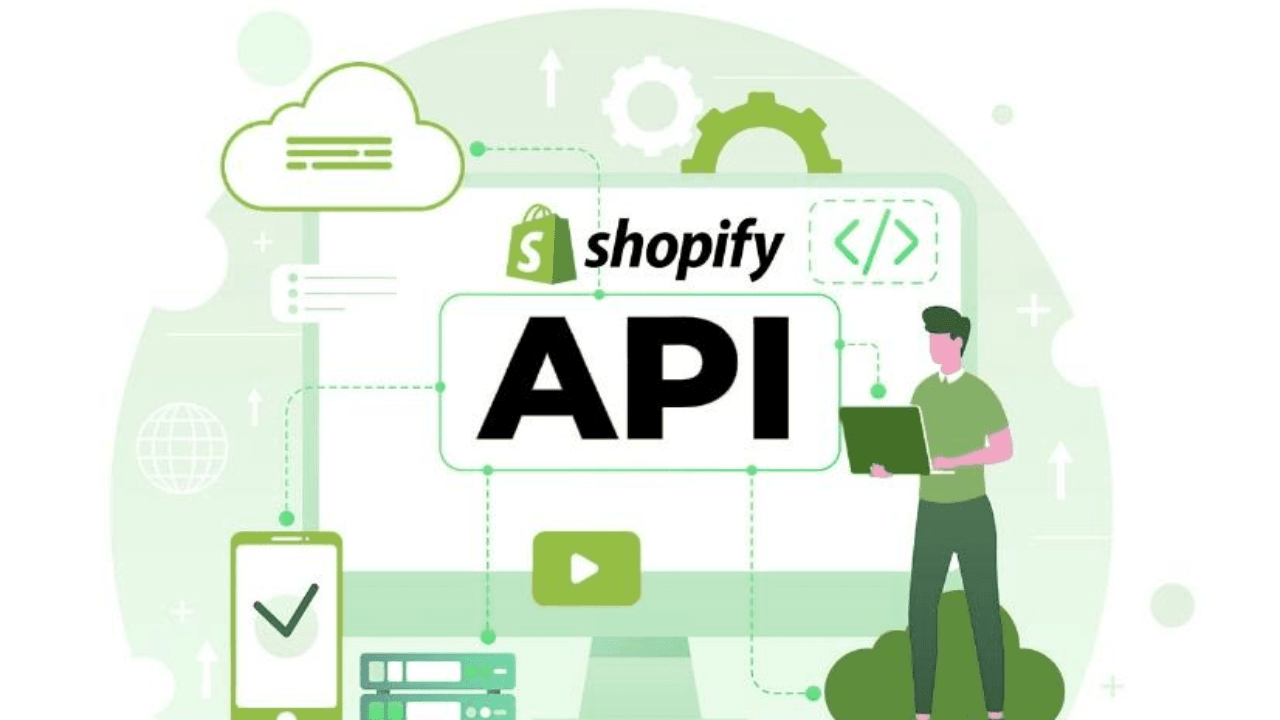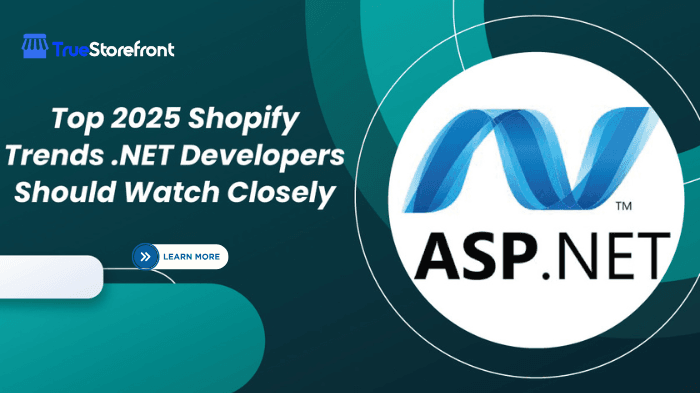In 2025, .NET developers are progressively working with Shopify, as more businesses are looking for flexible, scalable, and high-performance eCommerce software solutions. The birth of headless commerce has revolutionized conventional online stores by allowing developers to bifurcate the front-end user experience from the backend commerce engine. Such decoupling means faster, highly customizable, and ever-changing storefronts that evolve along consumer expectations. The worldwide headless commerce market is set to be worth $11.8 billion in 2028, growing at a CAGR of 17.5 percent during the period 2021-2028. Such rapid growth reiterates the need for advanced eCommerce platforms that offer seamless and personalized experiences over websites, mobile apps, or any other digital touchpoint.
For a .NET Core development company, utilizing Shopify's headless tools, APIs, and frameworks gives them an edge, allowing them to build solid and future-ready online shops. This post will focus on the hottest Shopify trends in 2025, which incorporate significant tools, APIs, and best practices that .NET developers would need to stay ahead in the ever-evolving eCommerce environment.
I. Why Shopify Matters for .NET Developers in 2025?
1.1. Shopify’s Market Growth and Developer Ecosystem

Shopify is behind millions of stores around the globe, and there is no sign of it slowing down. The company has revamped its API ecosystem, added robust SDKs, and released new enterprise-caliber tools. For developers, that means there's more opportunity but also more complexity to manage. By 2025, enterprises will need custom integrations to remain competitive. The leading .NET Core development company in India develops a secure and scalable Shopify backend on the .NET platform for retailers.
1.2. Rise of Headless Commerce and Custom Backends
Headless commerce is driving the change in online shopping. It separates the front-end interface from backend systems. The Shopify Storefront API allows developers to develop exciting, dynamic customer interfaces, while .NET handles business logic and integration of store functions. In this way, brands can quickly push new experiences without depending on conventional store templates for the job.
II. Key 2025 Shopify Trends Relevant to .NET Developers
2.1. Headless Commerce with .NET and Shopify Storefront API
Many brands now prefer to take a headless approach, since they want flexibility and speed of development. Developers can build a custom front-end using .NET and use Shopify as the backend. In case you have been using Blazor, Razor Pages, or similar and a query language such as GraphQL, it becomes possible to deliver swift, engaging storefront experiences custom-made for your clients.
2.2. Composable Commerce with Microservices Architecture
Composable commerce-driven change has now altered the way you build eCommerce systems. Your developers can handle payment, inventory, and order workflows as independent entities using .NET microservices. Shopify can be conscripted with Azure Functions or .NET Web APIs so that a business can use a decoupled architecture that scales and makes it easier to update.
2.3. AI-Powered Product Recommendations and Personalization
Personalization has now become mandatory rather than optional. Developers can use the .NET backend with machine learning models to create AI product recommendations. They can use the Admin API with Shopify’s customer data to provide real-time suggestions based on user activity, increasing customer engagement while increasing conversions.
2.4. Enhanced Integration with Payment Gateways & ERP Systems
Integration with external systems is the default backbone of the modern eCommerce enterprise. Developers can build connectors for payment gateways and ERP platforms using the .NET Core platform. Synchronizing the data between, say, SAP, QuickBooks, or Dynamics 365, can be entirely automated, while token-based authentication provides secure interaction between Shopify and external apps.
2.5. Increased Demand for Shopify Apps with .NET Backends
Day after day, customizations on Shopify apps are becoming much more in demand. Developers can use the .NET Framework to create private and public apps through either REST or GraphQL APIs. Then, after development, the app can be hosted on Azure App Services or AWS Lambda for scalability. Background jobs, on the other hand, are better managed with Hangfire or Azure Queues. This trend presents the developer with readymade opportunities to deliver great performance.
III. Best Practices for .NET + Shopify Integration in 2025
3.1. Choose the Right Shopify API (Admin, Storefront, etc.)

The right API is essential for success. The Admin API manages inventory, orders, and product data. The Storefront API supports headless commerce and fully custom storefronts. For modern projects, GraphQL is often chosen instead of REST because it offers faster queries and more flexibility. This is true in barest measures when dealing with heavier .NET and Shopify integrations.
3.2. Use Secure Webhooks and OAuth
Security must never be overlooked for integration. Webhooks should be processed with ASP.NET Core endpoints. Every request must be validated using Shopify’s signature checks. For app installations, OAuth provides secure and reliable authentication. These measures protect sensitive data and ensure that .NET and Shopify integration follows best practices.
3.3. Optimize for Performance and Scalability
Performance tuning contributes highly to system performance. Caching data, such as product catalogs that are commonly accessed, reduces response times. Async APIs with lightweight services ensure applications are fast during peak usage time. Developers must also monitor API rate limits to maintain scalable and uninterrupted .NET + Shopify integration.
IV. Tools and Frameworks to Leverage
4.1. For .NET Development
Developers building Shopify integrations with ASP.NET Core and Blazor can create interactive and reactive web apps. Azure Functions and WebJobs are highly recommended for serverless scenarios and background tasks. To model Shopify data, one can rely on Entity Framework Core, whereas AutoMapper and MediatR provide advanced support for the clean architecture and maintainable code. Engaging with a .NET Core development company ensures that teams provide an ample implementation of these frameworks for complex projects.
4.2. For Shopify Integration
ShopifySharp is a C# SDK that provides an easy way to interact with the API for any Shopify-specific task. Developers can also use .NET client libraries for GraphQL to issue optimized queries. Postman is good for testing APIs, while Ngrok is good for testing webhooks locally. Using these frameworks ensures that the integration with .NET + Shopify is robust, secure, and ready for deployment at production scale.
V. Common Challenges and How to Overcome Them

5.1. Authentication and Session Handling
Private apps require very secure access management with custom integrations. Access tokens must be set to be stored and refreshed. The long-running sessions must be handled cautiously to execute uninterrupted operations and facilitate smooth data flow. Following all .NET + Shopify integration best practices allows developers to achieve a secure connection with no hindrance to store owners and customers.
Role-based access control implementation further fortifies private app security. Based on user roles, permissions can be granted, with developers ensuring that only authorized individuals get to work on sensitive data or perform critical operations. Session monitoring goes on incessantly, and all these measures, along with robust token management policies, instill a sense of confidence in the .NET + Shopify integration, take away store information risks, and ensure a smooth experience for the merchant and their customers.
5.2. Dealing with API Rate Limits
Since the API is throttled by Shopify to protect system performance and system stability, these limits have to be kept in view by the developers; thus, retry logic is implemented with exponential backoff. If rate-limits are being handled correctly, then the .NET + Shopify integrations will work smoothly and fairly consistently, even during peak traffic and demand periods, when downtime and uncertainties can be a bigger concern.
Apart from just retry logic, smart request queuing helps towards handling the Shopify API rate limits. Developers maximize the use of their capacity by prioritizing what matters most for API requests while bunching low-priority API calls. They track API usage on a real-time basis, so they may not need to wait until bottlenecks appear to see where they are, so requests can be adjusted accordingly.
5.3. Testing and Debugging Webhooks
Webhooks work quite well for real-time updates, but testing and debugging them will be quite a nightmare. Ngrok, RequestBin, among others, can be used by developers to test webhook events locally before deploying. Logging all the incoming events, as well as errors, will ensure more transparency and simpler troubleshooting. These practices ensure an efficient and responsive .NET + Shopify integration to handle dynamic workflows under eCommerce.
Developers can strengthen the reliability of some automated tests that simulate different webhook events. One may want to keep an eye on webhook performance so that any potential problems are identified before they could affect the store operations. Local testing combined with thorough logging and continuous monitoring results in a strong .NET + Shopify integration that also allows an easy store operation and customer experience.
VI. What’s Next — Future Opportunities for .NET Devs in Shopify
6.1. Native AI Tools and Integrations
AI capabilities are being stretched out in Sidekick and Shopify Magic. Developers working with a .NET Core development company can develop AI-powered search, chatbot, and content generation within a .NET backend to enhance the customer experience and store performance.
6.2. Building for Shopify Plus and Enterprise Clients
Enterprise customers require complex workflows and B2B functionalities. When it comes to such specialized needs, the development of customized apps and integrations by a .NET Core development company or by .NET Core application development services delivers all the solutions on a scalable and secure basis for the bigger Shopify stores.
6.3. Expanding into Multichannel and Internationalization
With Shopify Markets, a business can sell across regions in complete harmony. Then, .NET Core application development services implement translation, tax, and compliance APIs to ensure multichannel smooth operation and a consistent experience for global customers.
VII. Want to Build Smarter Shopify Solutions with .NET? Let’s Collaborate
If you are a .NET developer looking to work with Shopify in 2025, this is just the right time to look at all sorts of opportunities. E-commerce is customer-facing with current trends like headless commerce, AI-based personalizations, microservices-based architecture, and multichannel integrations.
These developments enable developers to build online stores that are scalable, flexible, and high-performing, that fulfill the demands of the modern business. By utilizing secure APIs, following best practices, and taking advantage of the right tools, you will be able to provide solutions that improve customer experience, improve operational efficiency, and provide for future growth.
By partnering with a .NET Core development company in India, one gains access to specialists who will be able to implement these trends in the right way. When it comes to enterprise projects or hardcore requirements, dot net Core development services company will assure you of secure, reliable, and up-to-date Shopify solutions. Working alongside the experts will minimize risks, shorten development time, and help create a smarter, AI-ready commerce platform that stands out in the market.
Read more:
